Trending
This story is from March 15, 2021
Laxman Pai, who put Goa on global art map, passes away
Over the past decade or so, he painted standing with the help of a walker, and later, probably sitting in a wheelchair. But as time went by, Padma Bhushan awardee and legendary Goan artist Laxman Pai painted in progressively brighter and in more intense hues.
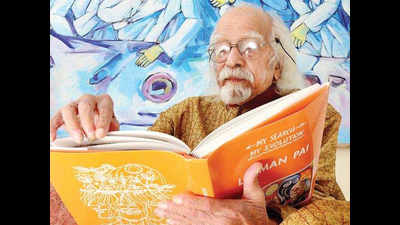
Laxman Pai
PANAJI: Over the past decade or so, he painted standing with the help of a walker, and later, probably sitting in a wheelchair. But as time went by, Padma Bhushan awardee and legendary Goan artist Laxman Pai painted in progressively brighter and in more intense hues.
He had long made it amply clear that he did not like dull colours. “The bold and sensational colours set my narrative into a pitch of intensity,” he once said.

His last words — before he breathed his last at 8.10pm on Sunday, at 95 — were “keep smiling”, reflective of his conviction that life should be nothing but bold and vibrant.

“When he was in the US, he signed a declaration and told his son that he never wanted to be put on artificial life support,” said art collector Shaistah Thapar. “He was adamant that he should be allowed to die in peace. Although the hospital offered to keep him on artificial support till his son reached Goa, his son said he respected his father’s words.”

His last rites will be performed on Wednesday, after his son arrives.
It was Thapar who brought Pai back to Goa after his wife Purnima passed away some years ago. Since then, he has been living in his home state.

Pai’s works are displayed in museums from Berlin to New York and from Chennai to New Delhi, and spent ten years in the Mecca of art, Paris. But a disproportionate amount of his work was inspired from all things Goan, be it Shigmo or the process of feni-making.

At a time when following western trends was in vogue, Pai increasingly turned to forms from Indian miniature paintings.
“He was principal of Goa college of art from 1977 for a decade, and so most of today’s prominent artists in Goa have been shaped seeing his works,” said well-known Goan artist Nirupa Naik. “His paintings have a unique character, and are such that even laymen would like them. He created his own form giving the female form to the sea and the coconut tree, among others.”

Pai has had no less than 100 solo exhibitions across the world, and, though he was never formally a member of the Progressive Artists Group of then Bombay, he was the last of the Goan artists of the movement.
“His demise is a big loss for the contemporary art scenario,” said prominent Goan visual artist and curator Rajan Fulari. “He was the last of the era of artists like FN Souza and Gaitonde, as he had worked with the Progressive Artists Group, though not officially a member of it. Goenkarponn can be seen from his work from the beginning. He mostly used Indianised elements and we drew inspiration from him.”
It was SH Raza who assisted Pai to travel to Paris from his stint at the Sir JJ school of art, which had turned troubled by his association with FN Souza and his paintings that were then viewed as controversial.
Pai studied fresco and etching in Paris, and later Rosenthal porcelain art in Germany. For a while, he was also inspired by ancient Egyptian geometric forms, only for his figures to later again turn more rounded and Indianised.
“I am my own Guru. I have taken things from others, but have made them my own,” Pai had said.
He had long made it amply clear that he did not like dull colours. “The bold and sensational colours set my narrative into a pitch of intensity,” he once said.
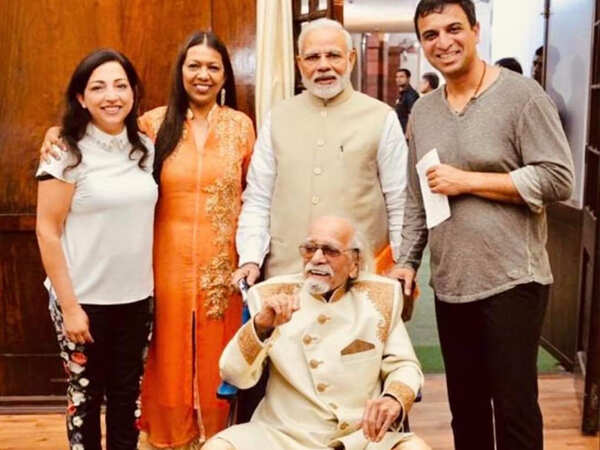
His last words — before he breathed his last at 8.10pm on Sunday, at 95 — were “keep smiling”, reflective of his conviction that life should be nothing but bold and vibrant.
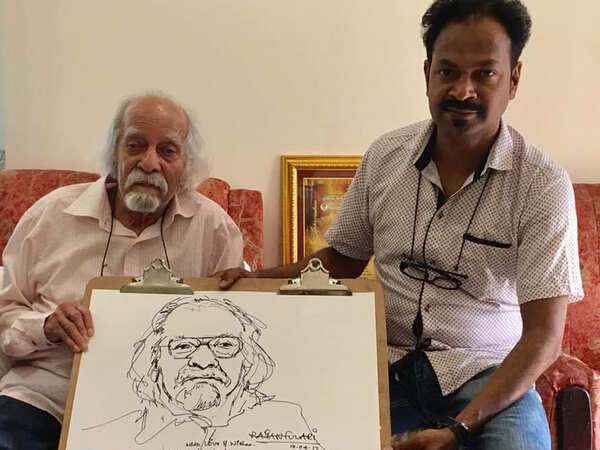
“When he was in the US, he signed a declaration and told his son that he never wanted to be put on artificial life support,” said art collector Shaistah Thapar. “He was adamant that he should be allowed to die in peace. Although the hospital offered to keep him on artificial support till his son reached Goa, his son said he respected his father’s words.”
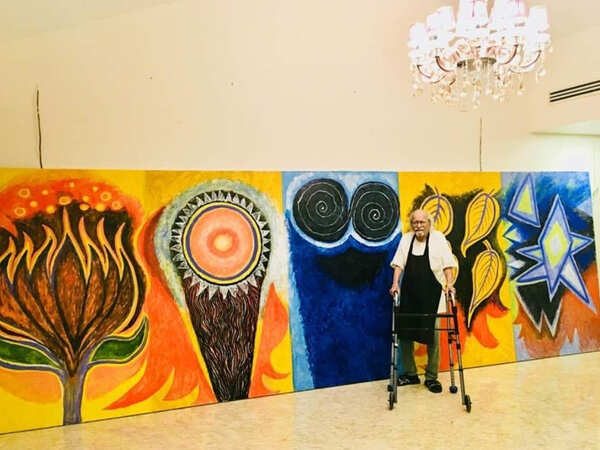
His last rites will be performed on Wednesday, after his son arrives.
It was Thapar who brought Pai back to Goa after his wife Purnima passed away some years ago. Since then, he has been living in his home state.
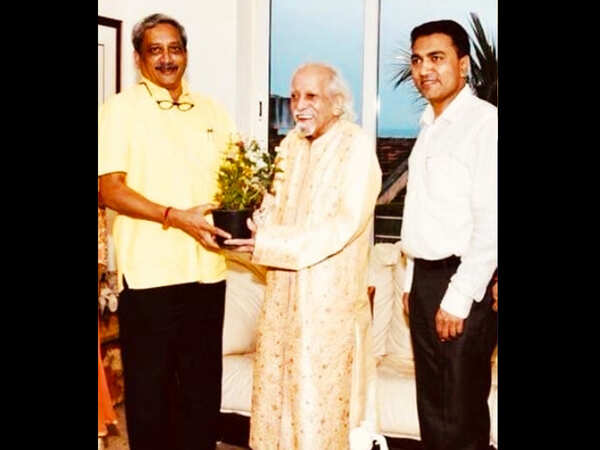
Pai’s works are displayed in museums from Berlin to New York and from Chennai to New Delhi, and spent ten years in the Mecca of art, Paris. But a disproportionate amount of his work was inspired from all things Goan, be it Shigmo or the process of feni-making.
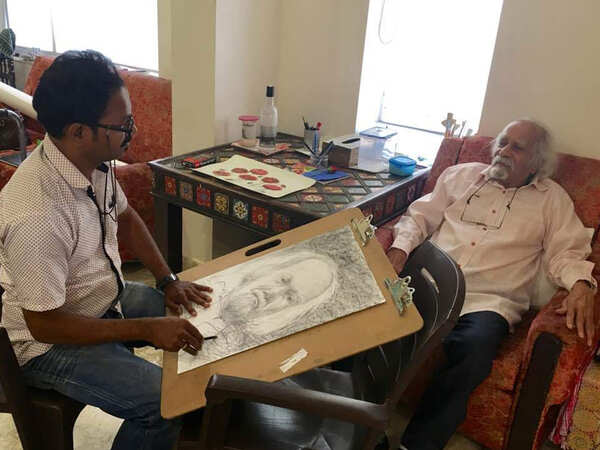
At a time when following western trends was in vogue, Pai increasingly turned to forms from Indian miniature paintings.
“He was principal of Goa college of art from 1977 for a decade, and so most of today’s prominent artists in Goa have been shaped seeing his works,” said well-known Goan artist Nirupa Naik. “His paintings have a unique character, and are such that even laymen would like them. He created his own form giving the female form to the sea and the coconut tree, among others.”
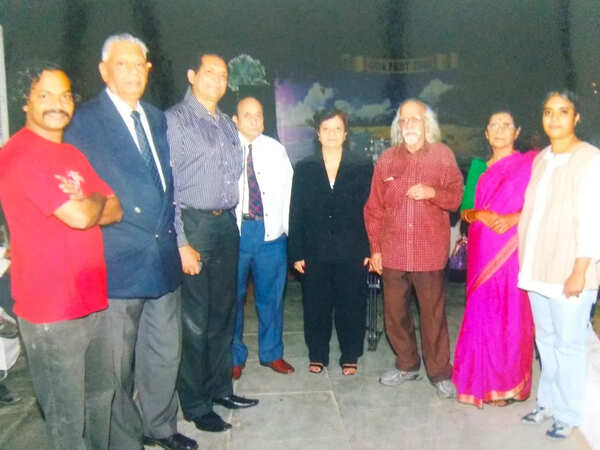
Pai has had no less than 100 solo exhibitions across the world, and, though he was never formally a member of the Progressive Artists Group of then Bombay, he was the last of the Goan artists of the movement.
“His demise is a big loss for the contemporary art scenario,” said prominent Goan visual artist and curator Rajan Fulari. “He was the last of the era of artists like FN Souza and Gaitonde, as he had worked with the Progressive Artists Group, though not officially a member of it. Goenkarponn can be seen from his work from the beginning. He mostly used Indianised elements and we drew inspiration from him.”
It was SH Raza who assisted Pai to travel to Paris from his stint at the Sir JJ school of art, which had turned troubled by his association with FN Souza and his paintings that were then viewed as controversial.
Pai studied fresco and etching in Paris, and later Rosenthal porcelain art in Germany. For a while, he was also inspired by ancient Egyptian geometric forms, only for his figures to later again turn more rounded and Indianised.
“I am my own Guru. I have taken things from others, but have made them my own,” Pai had said.
End of Article
FOLLOW US ON SOCIAL MEDIA










